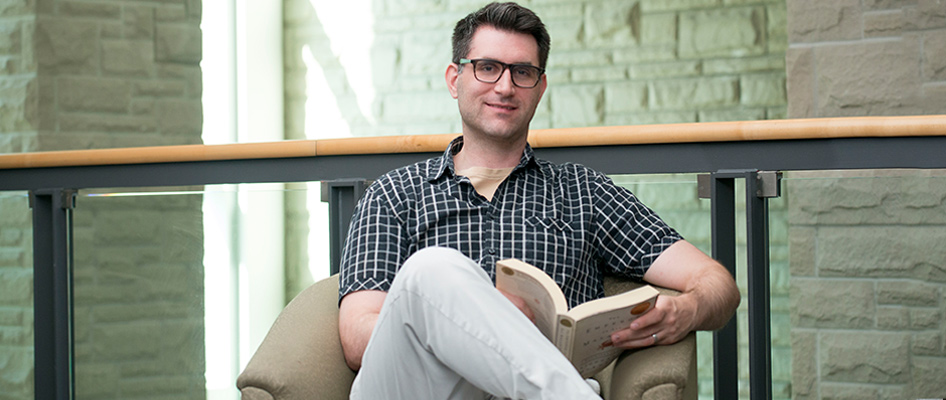Cancer Hunter
John Ronald is using out-of-the-box ideas to detect and treat cancer
By Crystal Mackay, MA’05
“The best ideas don’t come from sticking with the status quo.”
—John Ronald, PhD’09
John Ronald, PhD’09, holds up his wellworn, ear-marked copy of the Emperor of All Maladies. The book, a biography of cancer, brings the reader through a journey of how far we’ve come in the treatment of this complex disease; from crude surgeries to very sophisticated targeted therapies.
“The best ideas,” he says tapping the cover of the book, “don’t come from sticking with the status quo.” And that’s why he and his team at Robarts Research Institute are pushing the boundaries and thinking outside the box when it comes to cancer detection and treatment.
“This kind of innovating means that you are going to fail a lot and you are going to get people who say, ‘that’s never going to happen,’ but it also means that the success will lead to even bigger breakthroughs,” he said.
Ronald, an Assistant Professor in Medical Biophysics and one of the newest scientists at Robarts Research Institute, is working to build technologies that will be able to both detect and treat cancer. The field, called cancer theranostics, is a relatively new one, and his team is taking it to the next level by using engineered gene vectors that are essentially rings of double-stranded DNA built in his lab.
“We engineer them to be smart,” he said, “so that when we inject them into the body, they are silent, but when they find a cancer cell, we encode them to turn on a gene that we can detect.”
The idea is to be able to hunt down cancer cells at the earliest stages using imaging or blood tests to see these turned on gene vectors, and then using that same technology to treat the cancer at the same time. Current practices often find cancer when it’s too late, making the prognosis for survival grim. If you could detect even the first sign of cancer cells in the body and then treat them instantly, you would have a much better chance of beating it every time.
He admits that it sounds like something out of a science-fiction movie, but that it’s not unreasonable to think that it will be a reality in the future.
“To do it in patients is probably still 30 years off; it’s my whole career,” he said. “And we’ll make mistakes along the way, but that doesn’t bring me down. Why would it?”
Ronald says he gets immense satisfaction from coming up with a brand new idea and building it from scratch in the lab and he hopes he can pass that excitement on to his students.
“I want them to see science as big ideas and not to be afraid to explore the unique angles,” he said.









